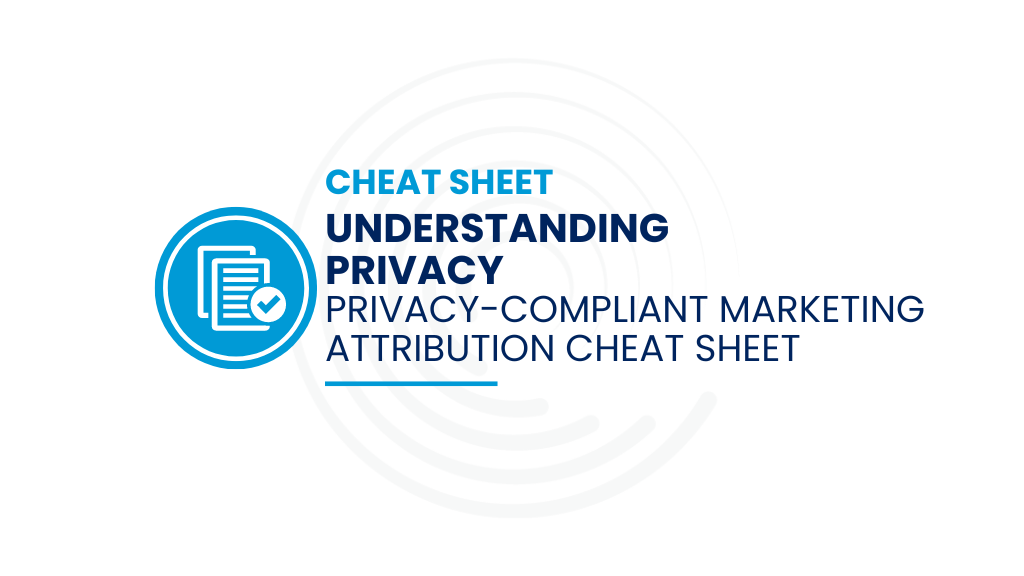 As a marketer, one of the main questions that seem to always get asked is, “Can we actually connect any of this marketing data to sales?”
As a marketer, one of the main questions that seem to always get asked is, “Can we actually connect any of this marketing data to sales?”
Sometimes this is doable by cobbling together spreadsheets and rogue data, but without a single source of truth for marketing and sales, it can be a tough question to answer. And if marketing and sales measurement isn’t in alignment, it can be extra hard to defend the marketing spend.
That’s why we are here to share the top 5 ways marketers can defend the spend in 2022. Hopefully, these strategies will help you show marketing’s impact on the business once and for all.
1 – Don’t assume decision-makers know what you know
Unfortunately, for marketing, many people inside of organizations like to think they can do marketing’s job, even without the skills. So, educating and explaining your marketing strategies, tactics, and why they are important can help them realize how much you are actually contributing to the business.
As a reminder, it’s good to remember that every person on the executive team wants to see different measurements. So, for greater understanding, mapping your results or providing different dashboards to each exec can be useful. For example, the CFO may only care about where the budget is being allocated whereas the CEO may just want to see how marketing is contributing to overall revenue.
2 – Make sure sales and marketing are on the same page
Some of the most successful B2B marketing and sales teams have one thing in common, they have constant discussions and dialogue between sales and marketing.
Holding regular meetings to talk metrics and to understand whether or not you’re on or off-target can be key to determining where you need to shift or reallocate budget and programs. It’s also important that sales and marketing agree on definitions of SLAs and other metrics, use an all-inclusive funnel metrics tool and ensure that Salesforce is syncing properly to their martech solutions.
3 – Get agile and use a mix of proactive and reactive planning
Some marketing teams plan for the upcoming year at the end of the year and others begin planning at the beginning of the year. Sometimes you have to plan several times a year because the business is constantly changing. In any case, some parts of planning are reactive and some are proactive which can allow for a more agile approach.
The best metrics to look at when reactive plannings are demand waterfall metrics or funnel metrics. This would mean taking a look at your lead management process and looking at volume, velocity, and conversion rates to see where you can optimize quickly. Look at these metrics based on the different campaigns you’re running and then you can optimize your lead management process.
One way you can proactively optimize for planning is by looking at the sales to lead handoff. Ask yourself how well the leads are being followed up on? What is happening with them? Is the sales team meeting their SLA? What channels and messaging are performing the best over time?
Understanding the answers to these questions is super important to figure out how to defend your spend.
4 – Turn your team into ambassadors armed with accurate information
It’s great if your marketing operations person knows what’s going on with marketing measurement, but it’s even better if everyone in the marketing organization knows what is going on with the metrics and whether or not you’re on or off-target.
You can arm your marketing team to be ambassadors for their conversations with sales to help you optimize the activities that are happening. Some of the most successful marketing teams arm their teams with key marketing data.
5 – Make sure you have a single source of truth for marketing and sales
If marketing is looking at one set of data and sales is looking at a different set and they don’t match, it’s really tough to have an intelligent conversation between marketing and sales.
It’s important to store your data in one place, like Salesforce, for keeping all of your data clean so you can generate trusted reports and dashboards that all teams agree on.
——–
Marketing measurement gives you the power to become a great team player within your company. So, in order to defend your marketing spend, make sure you’re speaking to your execs in their language, ensure sales and marketing are on the same page, get agile, turn your team into ambassadors and make sure you have a single source of truth.
Interested in seeing a real-life example of how Integrate has followed this process to defend their marketing spend?
Watch our on-demand webinar, Defend the Spend: How to Show Marketing’s Impact on Your Business, to hear Danny McKeever, Sr. Director, Marketing Operations and Technology from Integrate, and Bonnie Crater, CEO of Full Circle Insights as they discuss why it’s important for marketers to have access to reliable data that supports how their programs and campaigns contribute to pipeline and sales. We’ll also uncover the actual process Integrate uses to defend the marketing spend internally.




